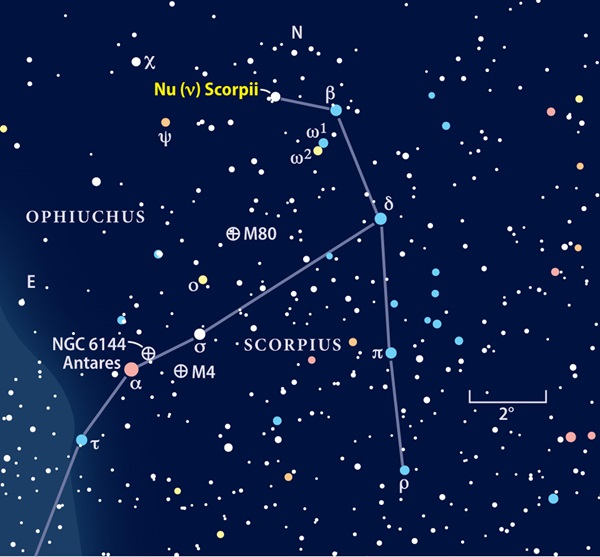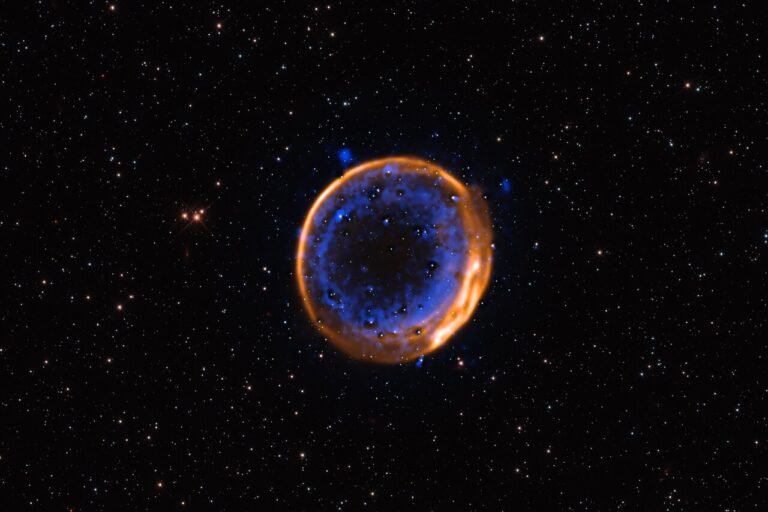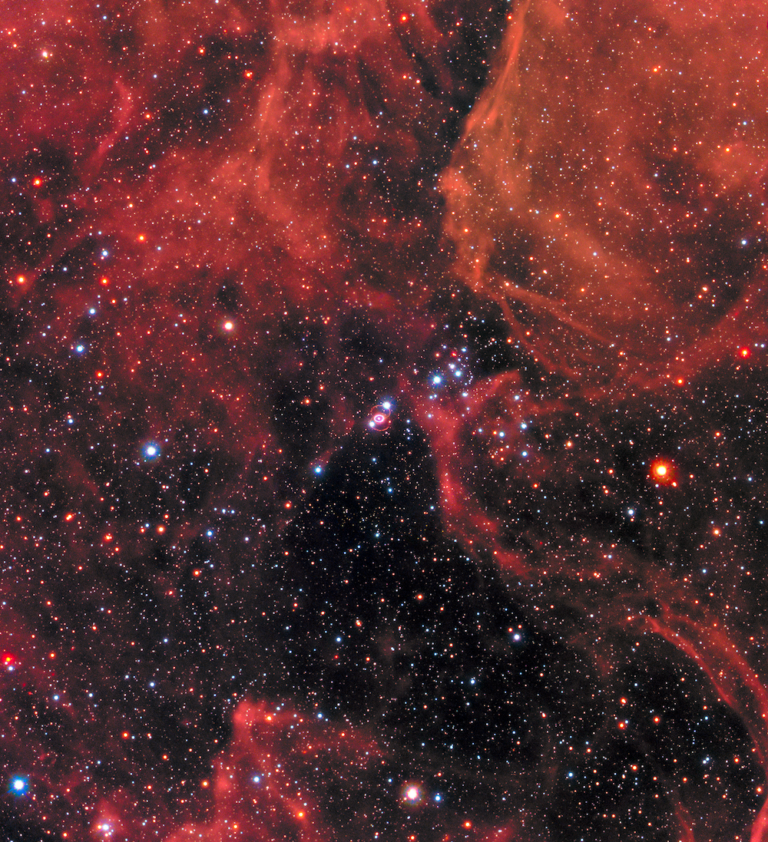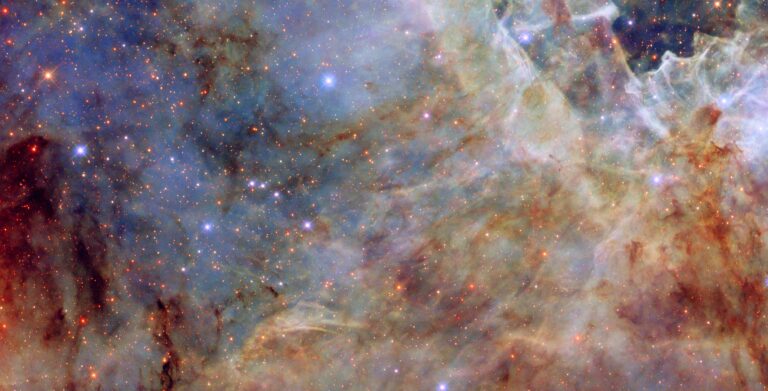Key Takeaways:
T his month, we delve into the history books to recount the tale of a binary star and the Civil War general who discovered it. Here’s the story.
In 1776, Czech astronomer Christian Mayer revealed that the star Nu (ν) Scorpii was a double. Soon afterward, German-born English astronomer William Herschel observed the pair and cataloged it. For the small-scope owner, H V 6 (the 6th Class V double star [30″ to 60″ separation] in Herschel’s catalog) is a wide and easy split — its magnitude 4.0 and 6.3 members separated by a comfortable 41″. I first met this stellar duo in the summer of 1971, spotting it through a 3-inch f/10 reflector and magnifying power of 60x. At the time, I had no idea there was more to be seen.
Neither did Ormsby McKnight Mitchel when, in 1846, he examined Nu Scorpii through the 11-inch refractor at the Cincinnati Observatory in Ohio. The fainter member proved to be composed of magnitude 6.6 and 7.2 components, separated by 1.1″.
Mitchel’s astronomical contributions were noteworthy. During the decades prior to the outbreak of the American Civil War, he helped found the Cincinnati Observatory and Cincinnati Astronomical Society, edited and published Sidereal Messenger (the United States’ first monthly astronomy magazine), and directed the Dudley Observatory in Albany, New York. (Visit http://tinyurl.com/siderealmessenger to access Volumes 1 and 2 of Sidereal Messenger. The 27 issues, which cover the period from July 1846 to July 1848, are a treasure-trove of historical astronomy tidbits.)
As exceptional as they were, Mitchel’s astronomical contributions were overshadowed by his military exploits. He had a soldier’s background, having graduated from the U.S. Military Academy at West Point in 1829 and then serving briefly as an artillery officer before leaving the army for educational pursuits. At the outbreak of the Civil War, he reentered the military, receiving a Union Army commission of brigadier general of volunteers. His military exploits took him from Ohio, where he organized defenses around Cincinnati, to Tennessee, where he assisted in the capture of Nashville, and finally to South Carolina as commander of the 10th Army Corps and the Department of the South.
One of the most fascinating chapters in Gen. Mitchel’s military career concerns his involvement in what became known as the “Great Locomotive Chase.” In early spring 1862, he conspired with espionage agent James J. Andrews to commandeer a train in Georgia and drive it northward. In their wake, Andrews and a group of Union volunteers would destroy as much of the railway as possible, making it difficult for the Confederacy to transport troops against a planned attack by Gen. Mitchel on Chattanooga, Tennessee. The plot ultimately failed, and Andrews and several of his co-conspirators were captured, tried, and hanged.
Unfortunately, Gen. Mitchel’s revived military career was short-lived. While stationed in South Carolina in late 1862, Mitchel, now commissioned in the grade of major general, contracted and succumbed to yellow fever.
The Nu Scorpii/Civil War connection doesn’t end with Mitchel, though. In 1874, the eagle-eyed double star observer Sherburne Wesley Burnham, a Civil War veteran who served in the Union Army as a military stenographer, discovered that Nu Scorpii’s primary star is also a double. At the time, its magnitude 4.4 and 5.3 components were a mere 0.3″ apart. This was an amazing visual accomplishment, as Burnham made the discovery using a 6-inch refractor!
Their orbital motions have caused each of these two pairs (designated Burnham 120 [Nu Scorpii A and B] and Mitchel 2 [Nu Scorpii C and D]) to gradually separate. Today, they are wider than at any time since their discovery — 1.2″ for Burnham 120 and 2.2″ for Mitchel 2. Because of Nu’s southerly declination, those who live in mid-northerly latitudes will have to wait until Scorpius is as high above the horizon as it can be (around 10 p.m. in mid-June). The best possible seeing conditions are essential, and you’ll need at least a 4-inch telescope, ratcheted up to a 150x-plus magnifying power.
Questions, comments, or suggestions? Email me at [email protected]. Next month: More on green lasers. Clear skies!











